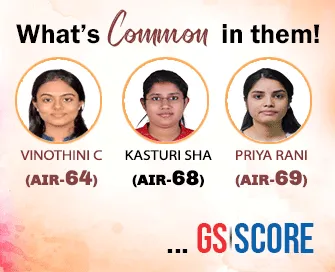

31st May 2025 (11 Topics)
Context
The Ministry of Education has raised concerns over rising private school enrolment alongside declining government school participation in states like Andhra Pradesh, Telangana, and Uttarakhand. Despite more government schools, student preference is shifting towards private unaided institutions, posing challenges for public education schemes like Samagra Shiksha and PM-POSHAN.
Rising Private School Enrolment vs Government School Decline
1. Overview of Enrolment Trends- Increasing Private School Enrolment:
- Steady rise in private school admissions noted in Andhra Pradesh, Telangana, Uttarakhand, Tamil Nadu, and other states.
- Private schools account for a higher percentage of enrolment despite fewer numbers compared to government schools.
- Declining Government School Enrolment:
- Government schools constitute a majority of schools but face falling student numbers.
- Examples: Andhra Pradesh government schools form 73% of schools but only 46% enrolment; Telangana 70% schools but 38.11% enrolment; Uttarakhand 72% schools but 36.68% enrolment.
- Private school enrolment stands at around 36% of total enrolment nationwide.
- Variation across states, with some like Tamil Nadu and Maharashtra showing similar trends.
- Post-COVID years have seen a shift, with data cleansing exercises and private school preference as possible reasons.
- Increased aspirations and demand for perceived quality in private schools.
- Possible perception of better infrastructure, teaching standards, or facilities in private schools.
- Impact of PM-POSHAN scheme discussions revealing lower uptake of midday meals in government schools as an indicator of reduced attendance.
Comprehensive Analysis:
- The shift of enrolment from government to private schools highlights systemic challenges in public education such as infrastructure inadequacies, quality of teaching, and perception issues.
- Despite greater accessibility to government schools in terms of numbers, enrolment reflects parental preference driven by aspirations for better educational outcomes.
- The phenomenon risks increasing educational inequality, as economically disadvantaged children may be left behind if government schools weaken.
- Government expenditure on schemes like Samagra Shiksha and PM-POSHAN is substantial, yet the declining enrolment undermines effective utilization of funds.
- The COVID-19 pandemic may have accelerated shifts due to school closures and changes in perception of government school safety or quality.
- States’ data cleansing exercises indicate that part of enrolment drop may be due to administrative adjustments, but underlying trends remain concerning.
Way Forward
- Improve Quality and Infrastructure: Targeted investments in teacher training, infrastructure upgrades, and digital tools to enhance learning outcomes in government schools.
- Branding and Community Engagement: Initiatives to rebuild trust in government schools through community involvement and showcasing success stories.
- Policy Reforms: Introduce accountability measures for government schools and incentivize attendance.
- Address Socio-economic Barriers: Strengthen support services such as midday meals, transport, and scholarships to retain disadvantaged students.
- Data-driven Approach: Continuously monitor enrolment trends using UDISE+ and other tools to assess impact and refine strategies.
- Public-Private Partnerships: Collaborate with private sector and NGOs to uplift government schools while maintaining affordability and accessibility.
PM-POSHAN Scheme
|
PYQ:Q. “Examine how nutritional schemes like POSHAN Abhiyan and Mid-Day Meal contribute towards child development and reducing malnutrition in India.” (2018) |
More Articles

